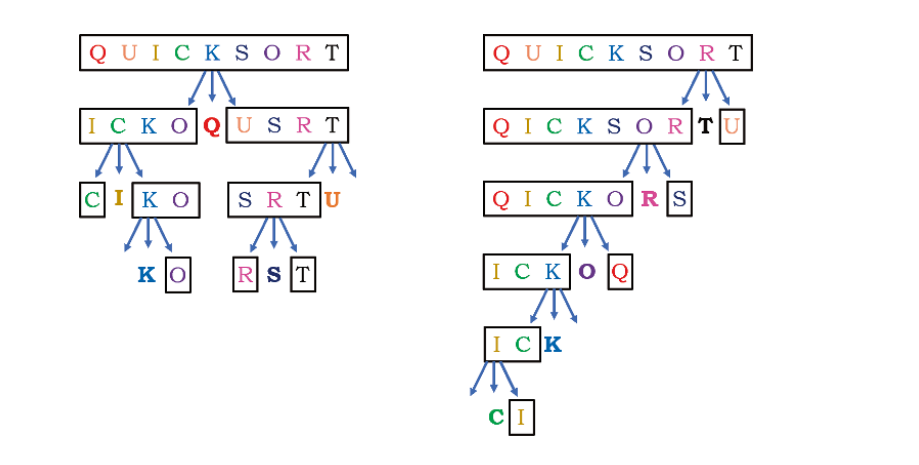Quick Sort
Overview
The idea of quicksort is simple, you have an array of n elements, you take the p element from the array of n elements, remaining n - 1 elements.
You denote that the p element in here is a pivot. For each element in the array n - 1 elements, the element that smaller than pivot will
go to the left of it, the element that greater than pivot will go to the right of it.
For example:
array: 3 7 8 5 2 1 9 5 4
p
less than `p`: 3 2 1
greater than `p`: 7 8 5 9 5
then: 3 2 1 "4" 7 8 5 9 5
p
It’s just compare, swap and recursion to divide then again until it meets a condition. Just that, what can be more difficult? What are you thinking about?
Demonstration taken from the book: The Algorithm Design Manual by Steven S. Skiena - Third Edition, Page 131.

Take the pointer p, divide the array into two parts: one part from l to p - 1 and the other range from p+1 to h.
void quicksort(char** unsorted, int l, int h)
{
if (l < h) {
int p = partition(unsorted, l, h);
quicksort(unsorted, l, p-1);
quicksort(unsorted, p+1, h);
}
}
In partition function, what can we do? we compare the goddamn string to see if it is less than the pivot, oh is it? then swap.
int partition(char** unsorted, int l, int h)
{
char *p_char = unsorted[h];
printf("pivot: %s\n", p_char);
int first_high = l;
for (int i = l; i < h; i++) {
if (compare_string(unsorted[i], p_char) < 0) {
swap(&unsorted[i], &unsorted[first_high]);
first_high++;
}
}
swap(&unsorted[h], &unsorted[first_high]);
return first_high;
}
the first_high is the first element in the array from range l to h.